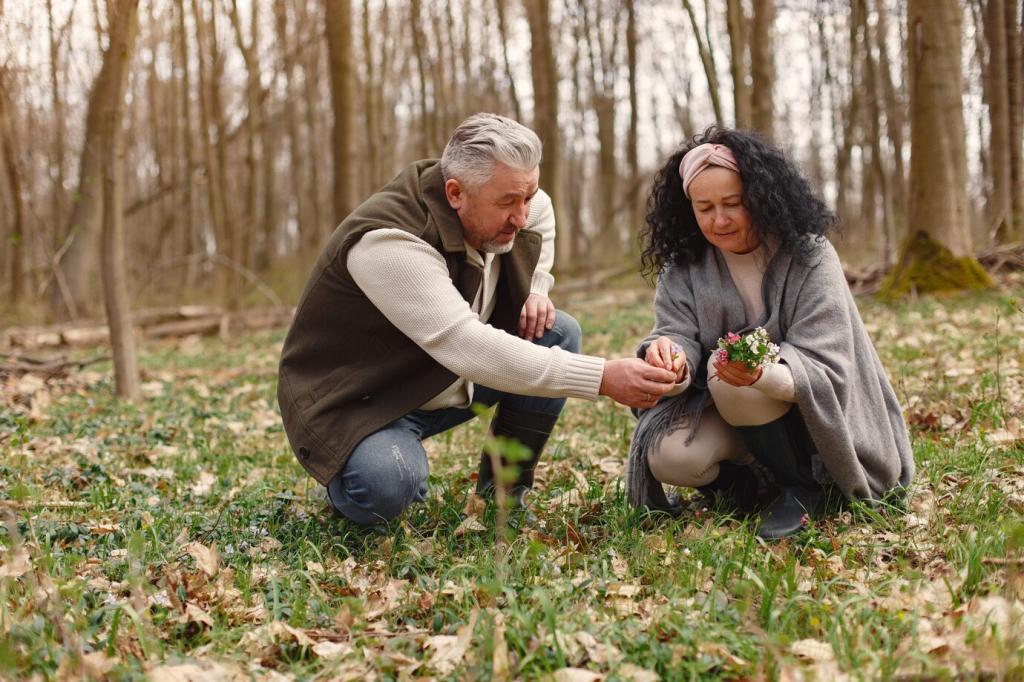Urban Biodiversity Projects: Rewilding Our Cities, One Block at a Time
Chosen theme: Urban Biodiversity Projects. Join a friendly, hands-on journey to transform streets, rooftops, and schoolyards into thriving habitats where pollinators hum, birds forage, and neighbors connect. Subscribe for weekly ideas, success stories, and practical guides you can start today.




Create vertical layers using dwarf shrubs, native grasses, and flowering herbs in varied pot depths. Add a shallow water dish, avoid pesticides, and watch solitary bees nest while butterflies bask on warm railings.
Designing Pocket Habitats in Tight Spaces
Carve shallow basins near gutters, plant storm-hardy natives, and use permeable mulch. Your rain garden filters runoff, hydrates soils, and feeds pollinators. Post a small sign to invite questions and recruit curious neighbors.
Designing Pocket Habitats in Tight Spaces
Community Power: Citizen Science and Stewardship
Weekend Bioblitzes
Invite neighbors to document species with smartphone apps over two hours. Celebrate unusual sightings, compare notes, and plan the next planting. Consistent bioblitzes reveal seasonal patterns and keep momentum alive between workdays.
eDNA in the Gutter
Environmental DNA sampling from puddles and drains can reveal hidden biodiversity. Partner with a local lab or university, share findings, and prioritize plantings that support species you discover in your own block’s runoff.
Adopt-a-Tree Rings
Assign volunteers to specific street tree beds. They weed, mulch, water, and add native perennials under the canopy. Post monthly photos, swap tips, and invite newcomers to adopt an orphaned tree ring today.
Rooftops, Schools, and Playgrounds as Biodiversity Labs
Layer lightweight soils, drought-tolerant natives, and modular trays for easy maintenance. Add logs for beetles and shallow gravel zones for ground-nesting bees. Host rooftop tours and invite students to track seasonal bloom calendars.
Rooftops, Schools, and Playgrounds as Biodiversity Labs
Replace portions of turf with meadow strips, add logs, leaf piles, and bird-friendly shrubs. Teachers can weave observations into science lessons, while families attend weekend planting days that strengthen community ties.
Rooftops, Schools, and Playgrounds as Biodiversity Labs
Set up simple transects and bug hotels. Give children journals to sketch species, tally pollinator visits, and note weather. Share results in a monthly newsletter and encourage families to replicate projects at home.
Water-Wise Designs for Urban Wildlife
Use shallow dishes with pebbles for landing pads, refresh frequently, and place near nectar sources. These simple stations support bees during heat waves and offer delightful close-up wildlife encounters on summer afternoons.
Water-Wise Designs for Urban Wildlife
If reopening waterways is unrealistic, mimic them with rills or permeable swales that echo historic flow paths. Pair with native sedges, interpretive signage, and community cleanups to reconnect residents with hidden watersheds.
Policy, Funding, and Long-Term Care
Small Grants, Big Pollinators
Microgrants can fund native seeds, tools, and signage. Partner with community foundations, local businesses, or councils. Share application templates, and tell us if you want quarterly reminders and sample budgets emailed.
Maintenance Calendars that Work
Match tasks to seasons: spring planting, summer watering, fall seed collection, winter habitat stacking. Publish a shared calendar, assign leads, and rotate duties so enthusiasm endures beyond the first photo-op moment.
Measuring Success Beyond Photos
Track pollinator visits, plant survival, soil moisture, and canopy shade. Combine numbers with stories from neighbors—windowsill birdsong, cooler sidewalks, calmer commutes. Comment with your metrics, and we’ll feature standout dashboards.
Start with a Three-Plant Palette
Choose one native grass, one flowering perennial, and one shrub that bloom at different times. Plant them in a sunny spot, skip pesticides, and share progress photos to encourage another neighbor’s first step.
Map Your Micro-Corridor
Walk your block and note gaps between green patches. Target one gap with a container meadow or tree-ring restoration. Invite comments on your map, and coordinate a weekend sprint to close critical habitat links.
Invite Neighbors, Build Momentum
Host a doorstep tea, swap seeds, and schedule a one-hour clean-and-plant session. Collect emails for updates, celebrate small wins, and subscribe for monthly project kits tailored to your building, street, or school.
